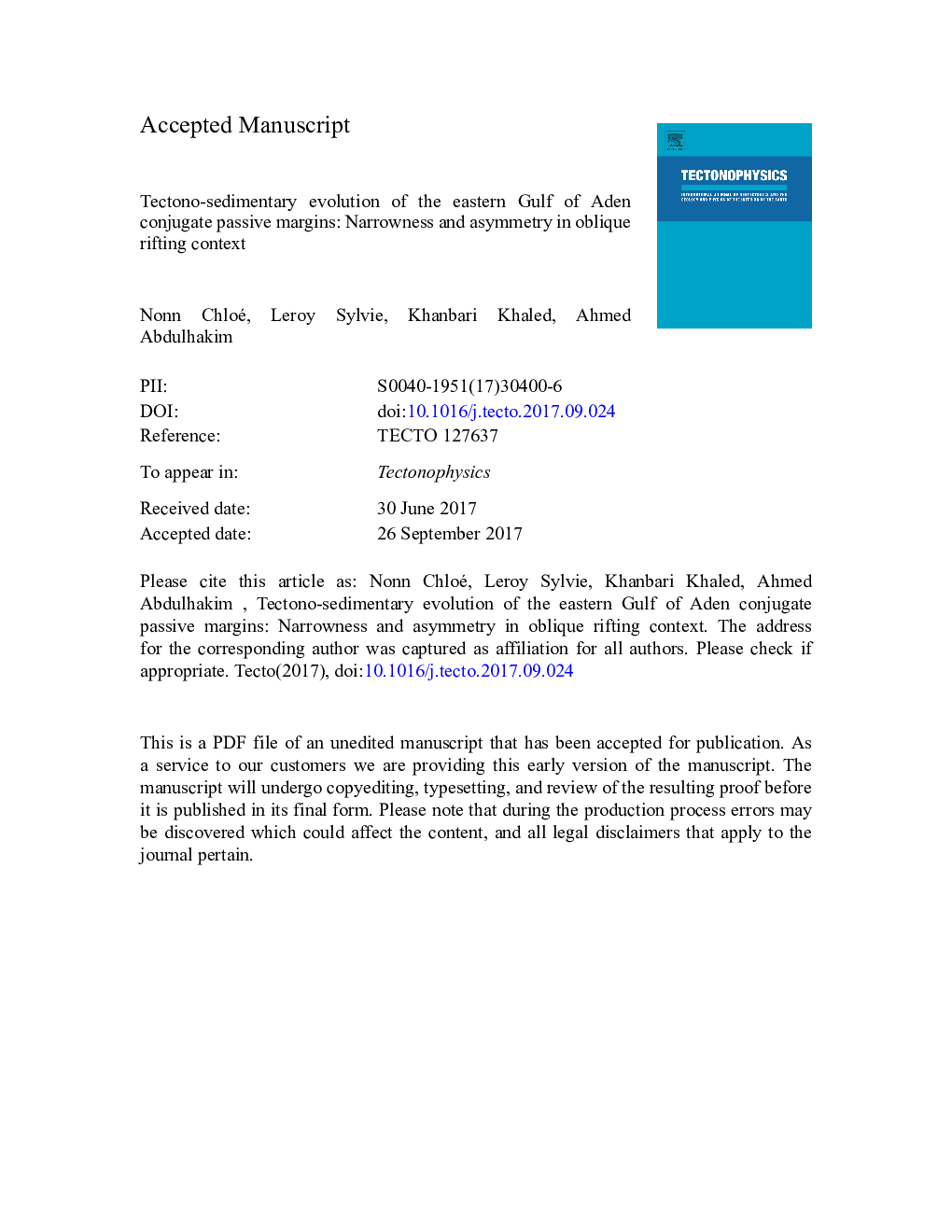| Article ID | Journal | Published Year | Pages | File Type |
|---|---|---|---|---|
| 8908863 | Tectonophysics | 2017 | 57 Pages |
Abstract
Here, we focus on the yet unexplored eastern Gulf of Aden, on Socotra Island (Yemen), Southeastern Oman and offshore conjugate passive margins between the Socotra-Hadbeen (SHFZ) and the eastern Gulf of Aden fracture zones. Our interpretation leads to onshore-offshore stratigraphic correlation between the passive margins. We present a new map reflecting the boundaries between the crustal domains (proximal, necking, hyper-extended, exhumed mantle, proto-oceanic and oceanic domains) and structures using bathymetry, magnetic surveys and seismic reflection data. The most striking result is that the magma-poor conjugate margins exhibit asymmetrical architecture since the thinning phase (Upper Rupelian-Burdigalian). Their necking domains are sharp (~ 40-10 km wide) and their hyper-extended domains are narrow and asymmetric (~ 10-40 km wide on the Socotra margin and ~ 50-80 km wide on the Omani margin). We suggest that this asymmetry is related to the migration of the rift center producing significant lower crustal flow and sequential faulting in the hyper-extended domain. Throughout the Oligo-Miocene rifting, far-field forces dominate and the deformation is accommodated along EW to N110°E northward-dipping low angle normal faults. Convection in the mantle near the SHFZ may be responsible of change in fault dip polarity in the Omani hyper-extended domain. We show the existence of a northward-dipping detachment fault formed at the beginning of the exhumation phase (Burdigalien). It separates the northern upper plate (Oman) from southern lower plate (Socotra Island) and may have generated rift-induced decompression melting and volcanism affecting the upper plate. We highlight multiple generations of detachment faults exhuming serpentinized subcontinental mantle in the ocean-continent transition. Associated to significant decompression melting, final detachment fault may have triggered the formation of a proto-oceanic crust at 17.6 Ma and induced late volcanism up to ~ 10 Ma. Finally, the setting up of a steady-state oceanic spreading center occurs at ~ 17 Ma.
Related Topics
Physical Sciences and Engineering
Earth and Planetary Sciences
Earth-Surface Processes
Authors
Chloé Nonn, Sylvie Leroy, Khaled Khanbari, Abdulhakim Ahmed,
